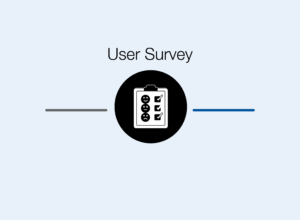Schlagwort: ‘Coscine’
Datastorage.nrw: How to Submit Storage Space Requests Using Coscine-JARDS

Source: Own Illustration
DataStorage.nrw offers you secure storage space for your research data – for all DH.NRW universities. Access is via the FDM platform Coscine, which provides different types of resources. You can use these either with or without deposited storage space. In this blog post, we explain how you can easily apply for storage space via Coscine-JARDS.
DataStorage.nrw: Ready and Available!
We recently informed you about the upcoming migration from Research Data Storage (RDS) to DataStorage.nrw. Now the long wait is over: DataStorage.nrw is now fully operational at all four locations. In this blog post, you can find out exactly what this means and what you as a Coscine user need to bear in mind.
Coscine User Survey 2025 – Take part now!
Once again this year, we would like to invite you to take part in the Coscine Survey 2025. From April 28 to May 30, 2025, you will have the opportunity to share your experiences, wishes, and suggestions with us.
Coscine supports you in organizing and storing research data – and thrives on active exchange with everyone who uses the platform. Your feedback is crucial for further developing Coscine and tailoring it even better to your needs. Read the rest of this entry »
DataStorage.nrw – How Do You Find out When Your Research Data Will Be Migrated?

Source: DataStorage.nrw
Preparations for the DataStorage.nrw connection are currently in full swing. Until the wait is over, we would like to prepare you for what the migration will look like for you on the Coscine platform. This way you can see at a glance whether your research data is currently being migrated.
Migration From RDS to DataStorage.nrw – What You Need to Know

Source: DataStorage.nrw
With the switch from Research Data Storage (RDS) to DataStorage.nrw, the migration of research data is due from the launch of DataStorage.nrw. In this article, we will give you an overview of how the migration works, what you should bear in mind and what changes you will have to expect.
From Research Data Storage (RDS) to DataStorage.nrw
Coscine gives you the opportunity to store your research data using various resources. From next year, there will be a fundamental change: The new DataStorage.nrw will replace the previous Research Data Storage (RDS).
In this blog series, we would like to introduce you to the advantages of the new storage system, explain the process of applying for storage space and go into the details of the migration from the old to the new system.
Milestone Reached: The Coscine Word Mark Is Officially Registered!

Source: Coscine
From an idea to an established platform: the history of Coscine is a chronicle of progress in research data management. The registration of Coscine as a word mark marks another high point in this success story. But how did it actually come about? In this blog post, we give you an overview of the origins and milestones of Coscine.
Why Is the Programming Language Python So Popular?

Quelle: Freepik
Python has become one of the most popular programming languages in the world in recent years, and for good reason. From its simplicity and readability to its versatility and strong community, Python offers a wealth of benefits that make it a preferred choice for developers in various industries. In this blog post, you can find out why Python is so popular and where the programming language is also used at the IT Center.







